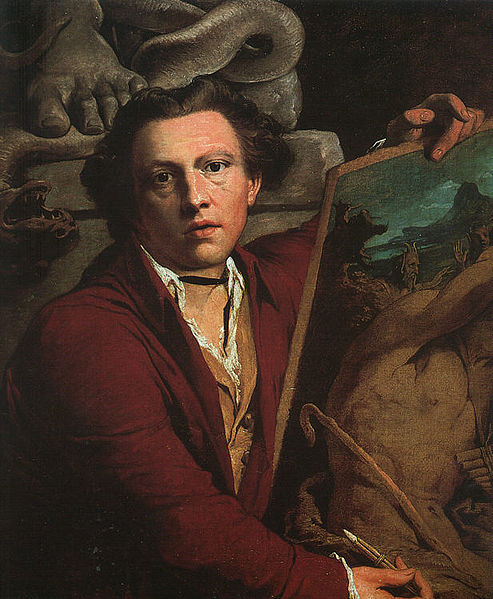James Barry (James Barry)

Artist. He is best remembered for his six part series of paintings entitled The Progress of Human Culture in the Great Room of the Royal Society of Arts. Born in Cork, Ireland his father was a builder and later a coastal trader between Ireland and England. He convinced his father to allow him to study drawing and art and was first instructed by local artist John Butts. Around the age of 17 he first attempted oil painting, and between then and the age of 22, when he first went to Dublin, he produced several large pictures, which decorated his father’s house. The painting that first brought him into public notice and gained him the acquaintance and patronage of Edmund Burke, was the “Baptism of the King of Cashel.” In the latter part of 1765 he traveled abroad, first to Paris, France, then to Italy where he remained upwards of three years in Rome, then on to Florence and Bologna, and finally home through Venice. He painted two pictures while abroad, an “Adam and Eve” and a “Philoctetes.” Soon after his return to England in 1771 he produced his picture of “Venus,” which was compared to the Galatea of Raphael, the Venus of Titian and the Venus de Medici. In 1773 he exhibited his “Jupiter and Juno on Mount Ida.” His “Death of General Wolfe,” in which the British and French soldiers are represented in very primitive costumes, was considered as a falling-off from his great style of art. His fondness for Greek costume was assigned by his admirers as the cause of his reluctance to paint portraits. About the same time he painted a pair of classical subjects, “Mercury Inventing the Lyre” and “Narcissus,” the last suggested to him by Burke. He also painted a historical picture of “Chiron and Achilles,” and another of the story of Stratonice. In 1773 it was proposed to decorate the interior of St Paul’s Cathedral with historical and sacred subjects but the plan fell to the ground, from not meeting with the agreement of the Bishop of London and the Archbishop of Canterbury. He was upset by the failure, for he had in anticipation fixed the subject he intended to paint, the rejection of Christ by the Jews when Pilate proposes his release. Later in 1773 he published “An Inquiry into the Real and Imaginary Obstructions to the Acquisition of the Arts in England,” vindicating the capacity of the English for the fine arts and tracing their slow progress to the Reformation, to political and civil dissensions, and lastly to the general direction of the public mind to mechanics, manufactures and commerce. In 1774 a proposal was made to the leading artist at the time to ornament the Great Room of the Society for the encouragement of Arts, Manufactures and Commerce (now the Royal Society of Arts), in London’s Adelphi, with historical and allegorical paintings. This proposal was at the time rejected by the artists but in 1777 he made an offer to paint the whole on condition that he was allowed the choice of his subjects, and that he would be paid by the society the costs of canvas, paints and models. His offer was accepted and he finished the series of pictures after seven years to the satisfaction of the members of the society, who granted him two exhibitions, and at subsequent periods voted him 50 guineas, a gold medal, and a further 200 guineas. He regularly returned to the series for more than a decade, making changes and inserting new features. The series of six paintings, “The Progress of Human Knowledge and Culture,” has been described by critic Andrew Graham-Dixon as “Britain’s late, great answer to the Sistine Chapel.” He became a member of the Royal Academy of Arts and in 1782 he was appointed professor of painting in the room of Edward Penny with a salary of £30 a year. During his time at the Academy he painted “The Thames (or Triumph of Navigation)” in 1791, which featured the English music historian Charles Burney. In 1799 he was expelled from the Academy soon after the appearance of his Letter to the Dilettanti Society, an eccentric publication, full of enthusiasm for his art and at the same time of contempt for the living professors of it. He remained the only academician ever to be expelled by the Academy until Professor Brendan Neiland resigned in July 2004. After the loss of his salary, the Earl of Buchan set to relieve him from his difficulties, and to settle him in a larger house to finish his picture of “Pandora.” In February 1806 he became ill and died in London, England at the age of 74. (bio by: William Bjornstad)
Born
- October, 11, 1741
- Ireland
Died
- February, 02, 1806
- England
Cemetery
- Saint Paul's Cathedral
- England

